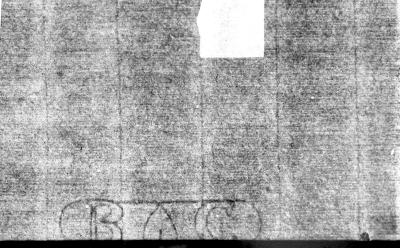

Berain served as dessinateur du cabinet du roi (draftsman to the king) under Louis XIV from 1674 until his death, and achieved great fame as a designer for the Paris Opera and for the royal menus plaisirs (king's entertainments). The present design depicts Apollo with his bow and lyre emerging from his chariot. He tramples on Python, the serpent guarding the oracle at Pytho (later Delphi), which he slew with his bow and arrow. The god is flanked by two pairs of herms representing the seasons; between each pair stands a smoking tripod, a reference to Apollo's prophetic powers. A device consisting of Apollo's lyre and quiver surmounts the cornice above each pair of herms. Above the crown atop the central niche are representations of the signs of the zodiac.
This design was long known only through an unsigned print in Jacques Thuret's 1711 publication of the artist's engraved works (pl. 77). Thuret himself added the inscription I Berain delin. (designed by Jean Berain). Roger-Armand Weigert, the first modern scholar to catalogue Berain's oeuvre, considered that the drawing undeniably served as preparation for the print, although, lacking comparative material, he had reservations as to whether the drawing was by Berain or by the unknown artist who produced the engraving (Weigert 1937, vol. 2, p. 64). The print was also recorded as the work of Berain by the connoisseur Pierre-Jean Mariette in the early eighteenth century. In his Notes Manuscrits, Mariette described the composition as a tapestry design. During his career, Berain is thought to have made designs for more than 250 tapestries for the royal tapestry works at Beauvais. His designs were also used outside of France. The present composition was woven in Erlangen between 1734 and 1740 by Jean Dechasaux le jeune, son of a French Protestant weaver from Aubusson. The tapestry, in the Bayerisches Nationalmuseum, Munich (inv. no. 93.589), deviates in several details from the drawing and the overall design has been cropped and compressed into a narrower rectangle.
The sheet is indeed preparatory in function. The winged female restraining the horse at left, drawn on a patch pasted to the drawing, is repeated in the etching, and the entire design has been traced for transfer with a dry stylus. The Apollonian scenes embellishing the roundels between the herms and the relief panels on the front of the plinth found in the print have not yet been added. While Jerome de la Gorce supports the attribution to Berain outright, Peter Fuhring considers the drawing to be by a skilled hand perhaps that of the engraver clarifying Berain's design before working the plate (correspondence with author, 2006).
Watermark: Letters "B [heart] C" in cartouche (Benoit Columbier, Paris, ca. 1700).
Ratouis de Limay, P. (Paul), b. 1881, former owner.
R.-A. Weigert, Jean I Berain, Dessinateur de la chambre et du cabinet du roi (1640-1711), Paris, 1937, no. 60, pl. XXII, fig. 41.

